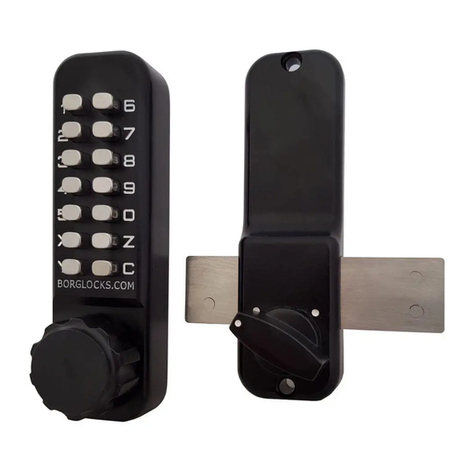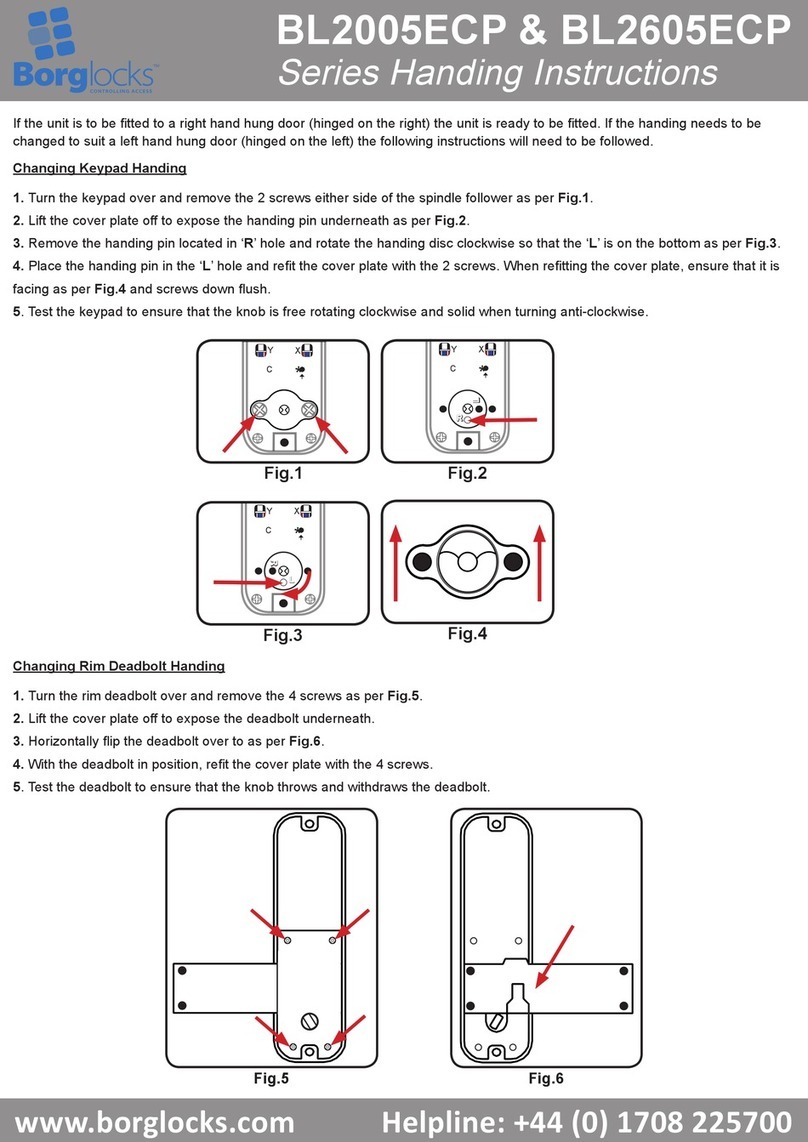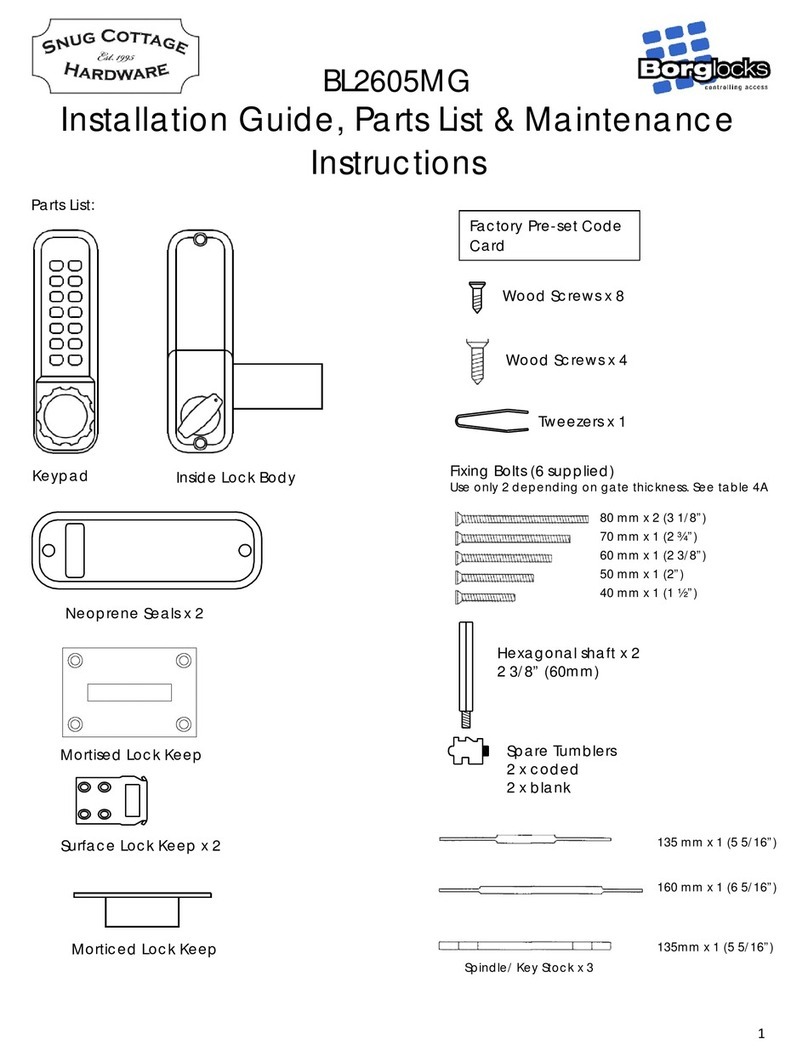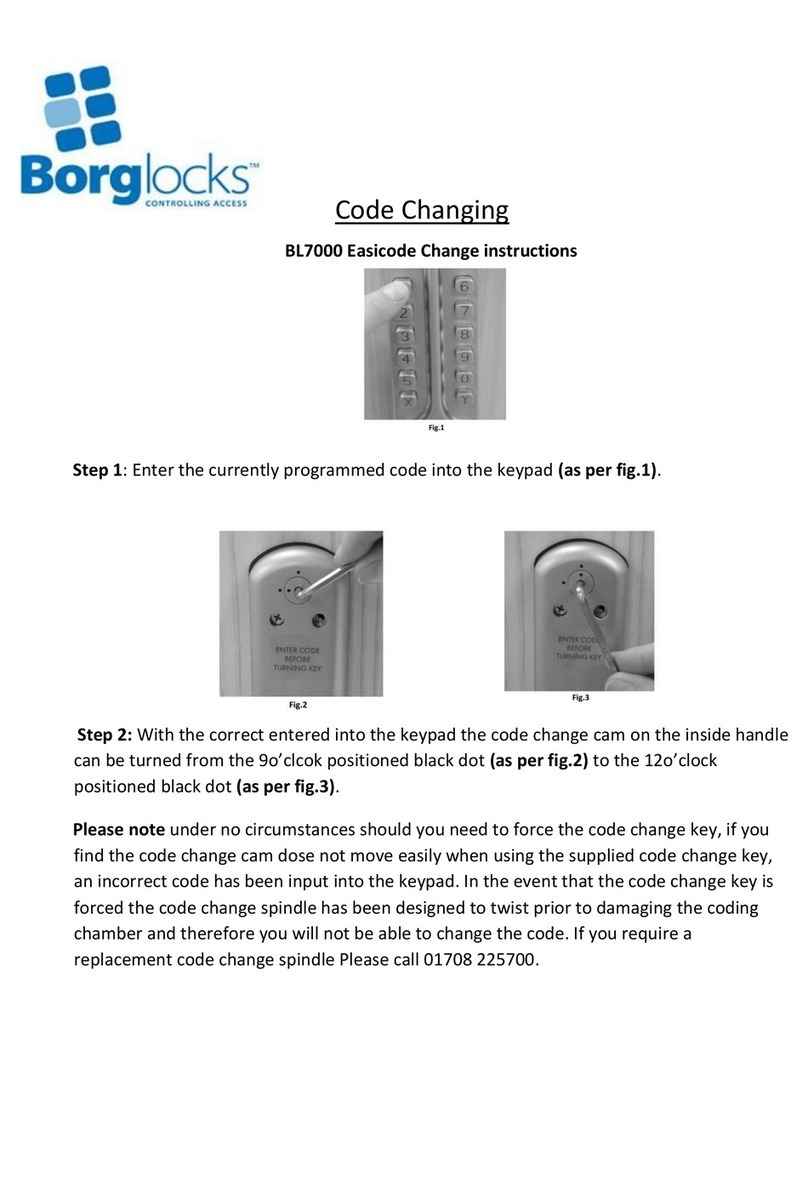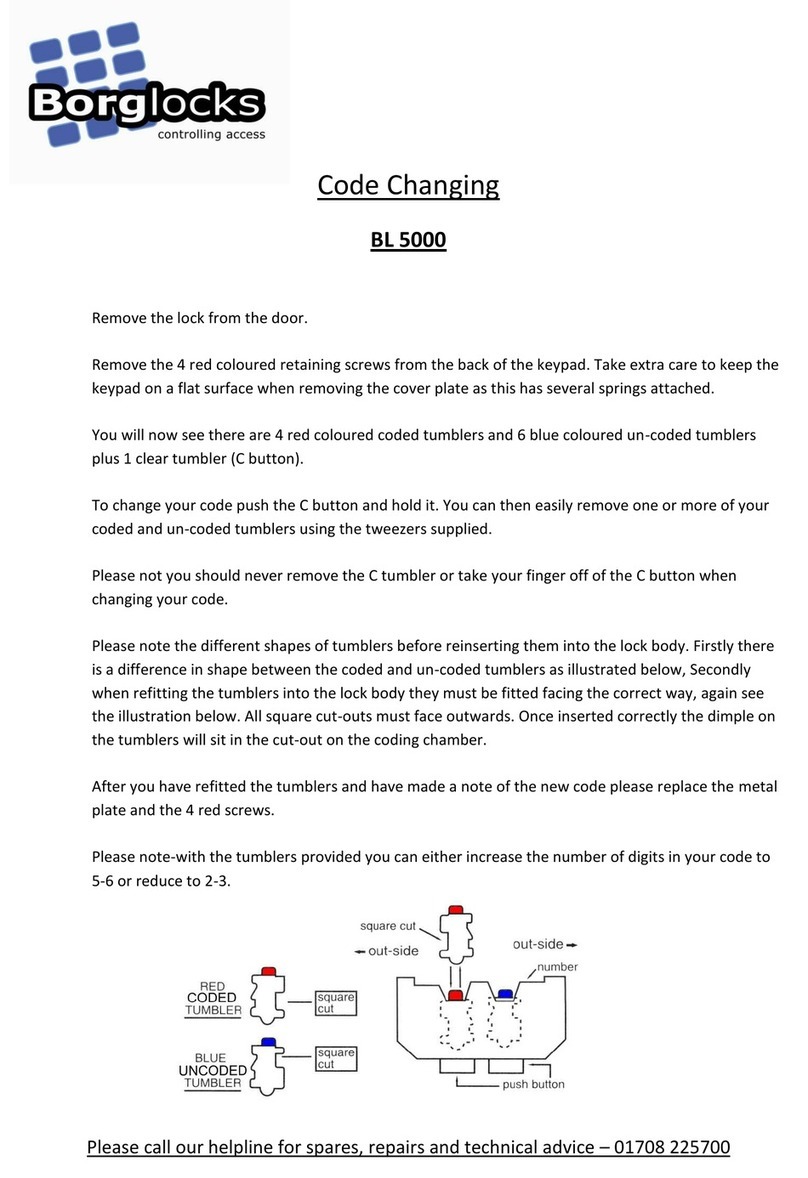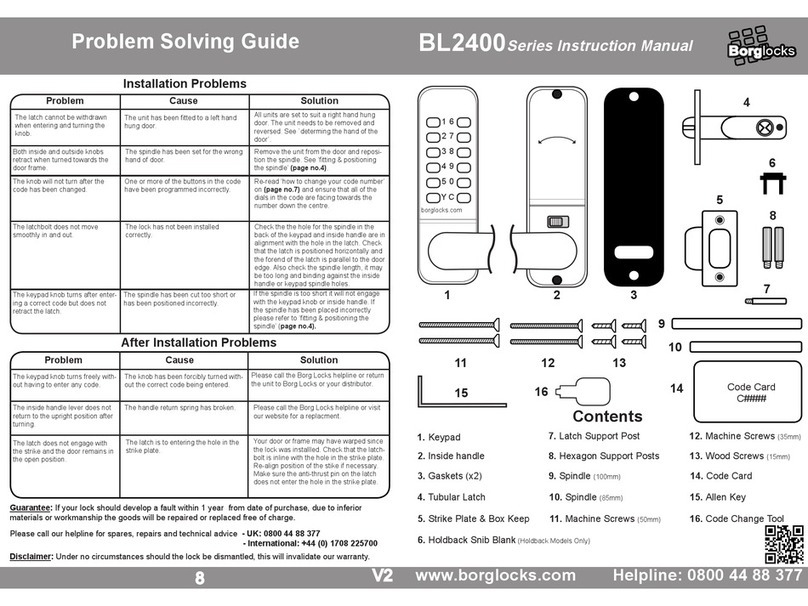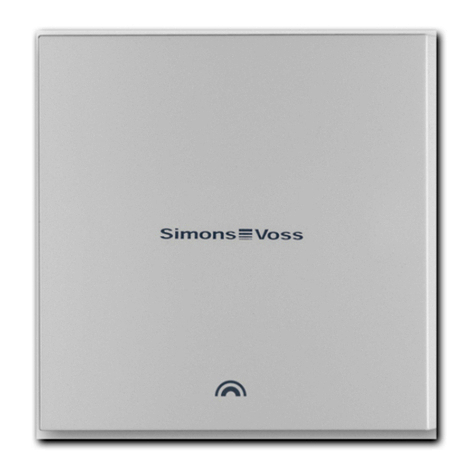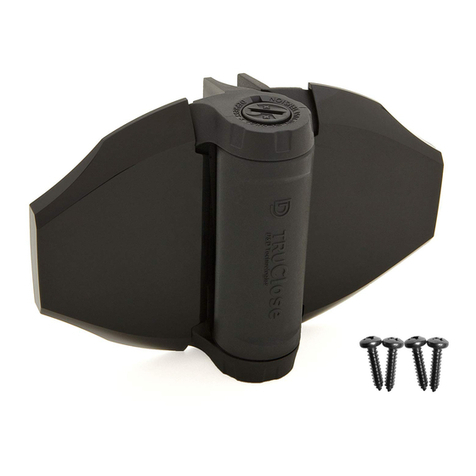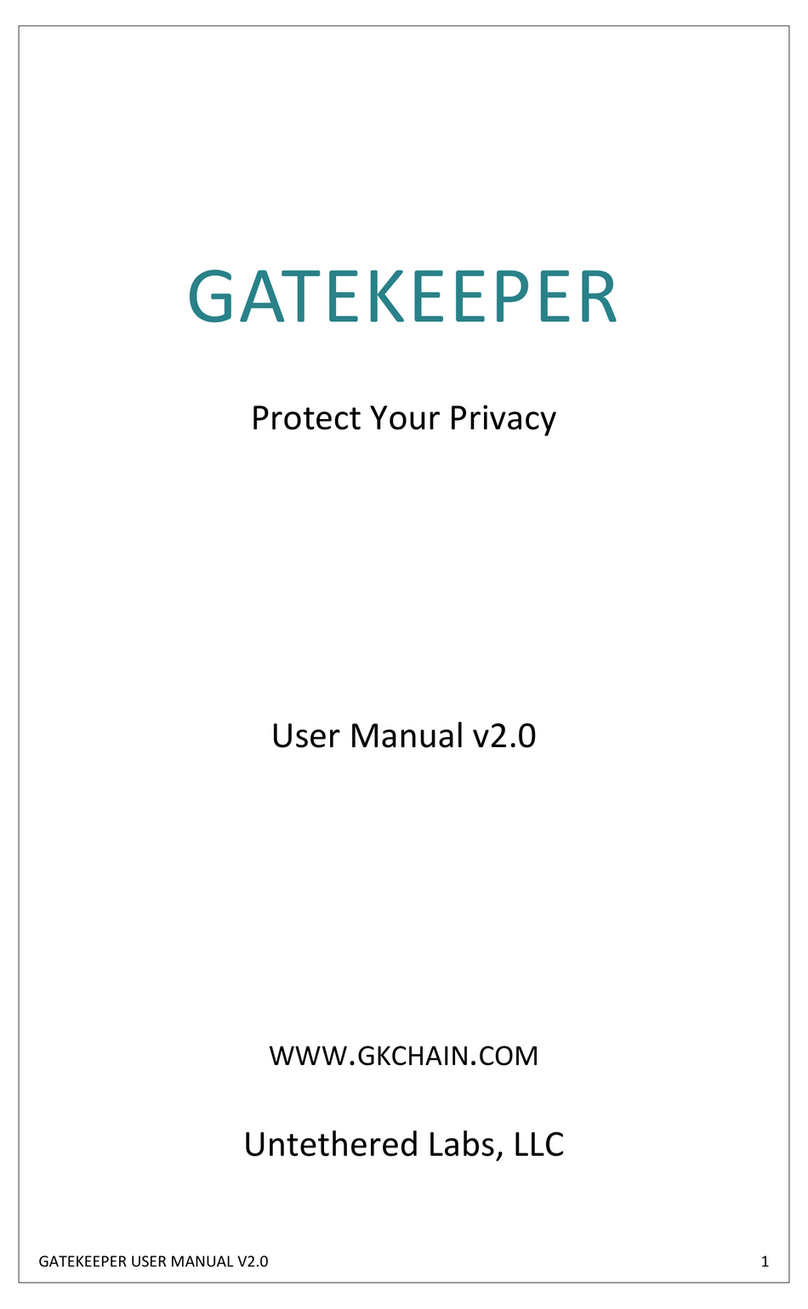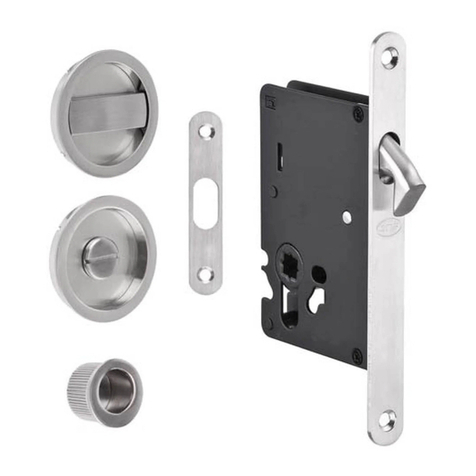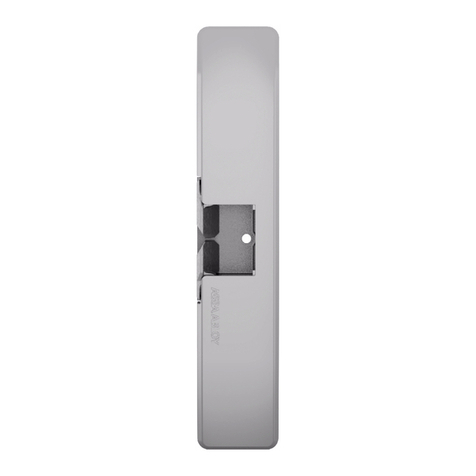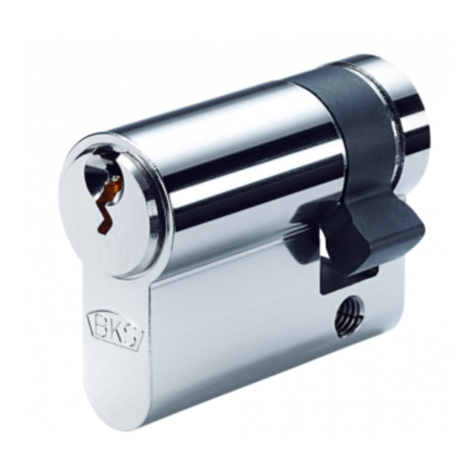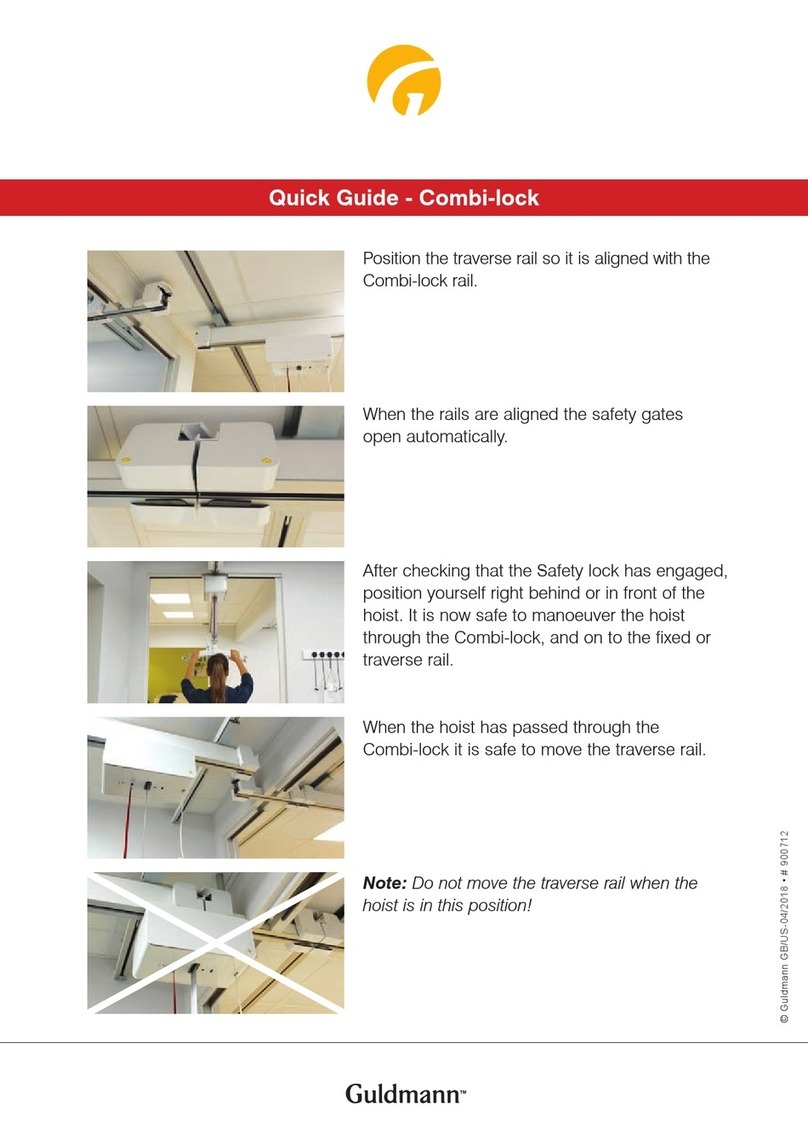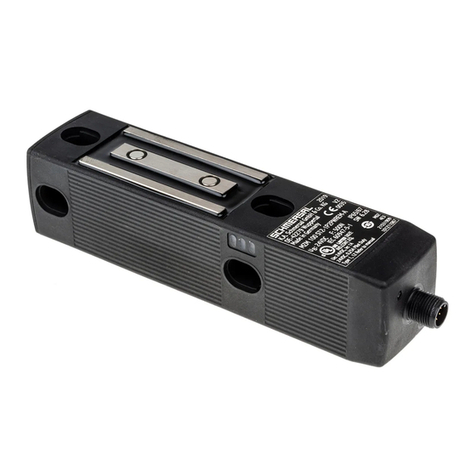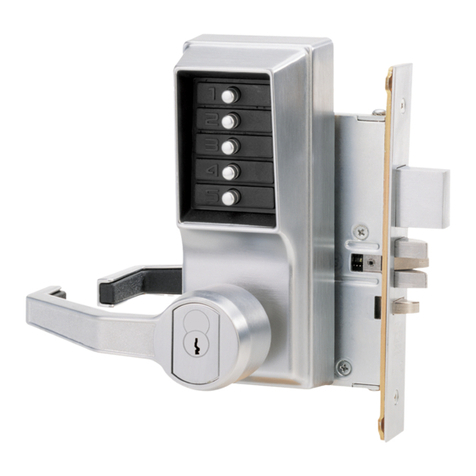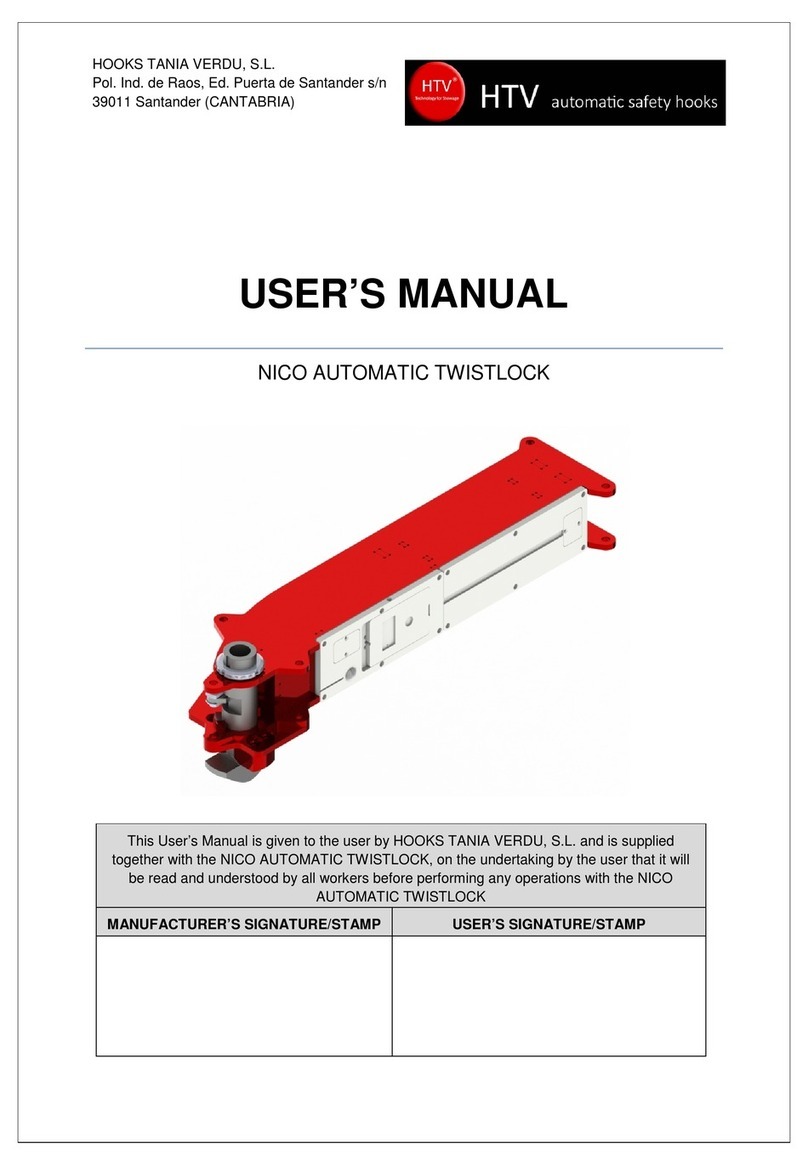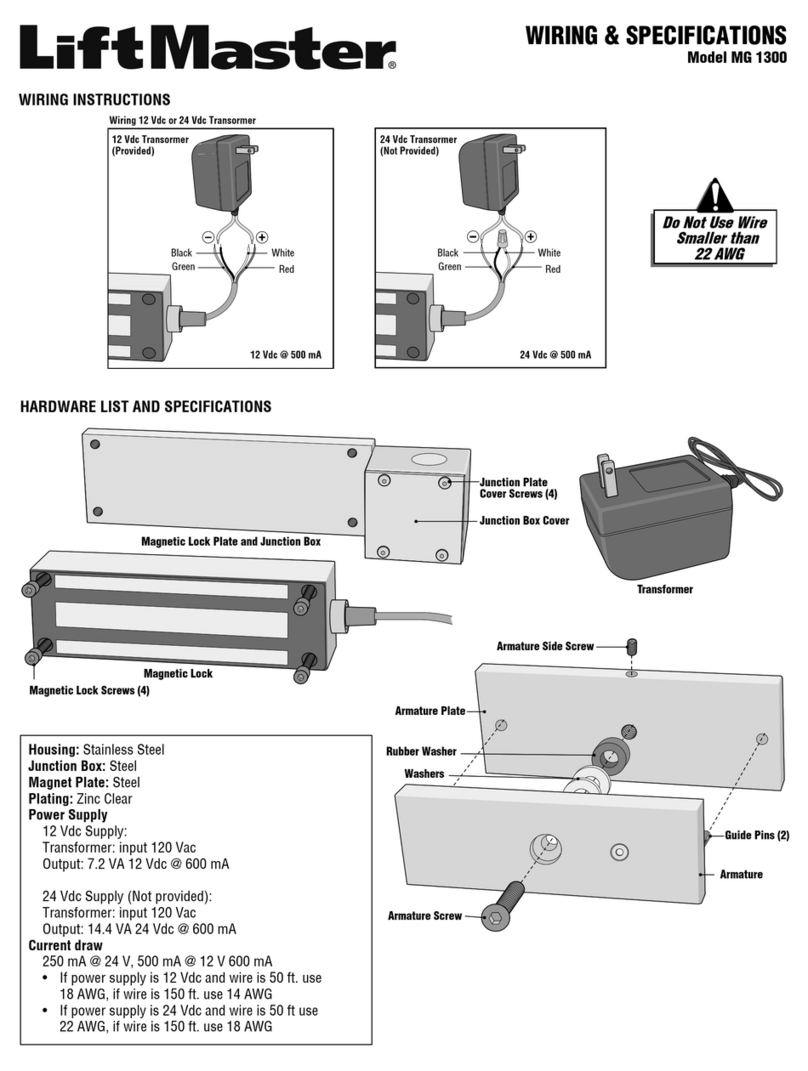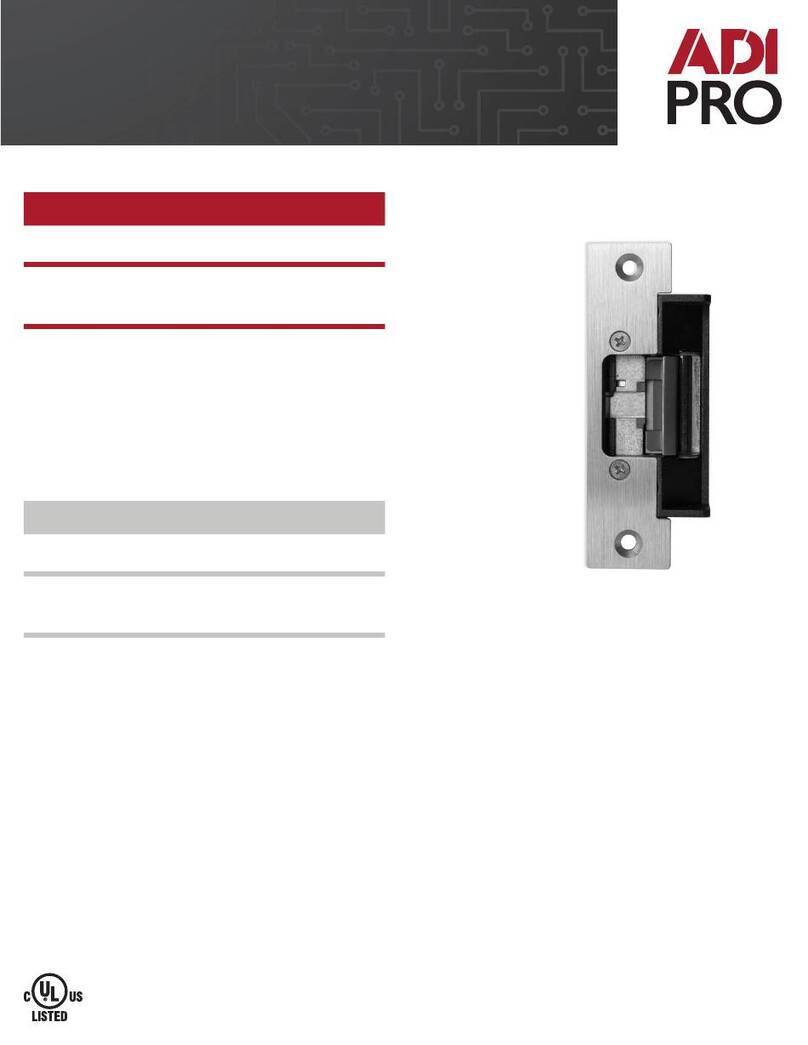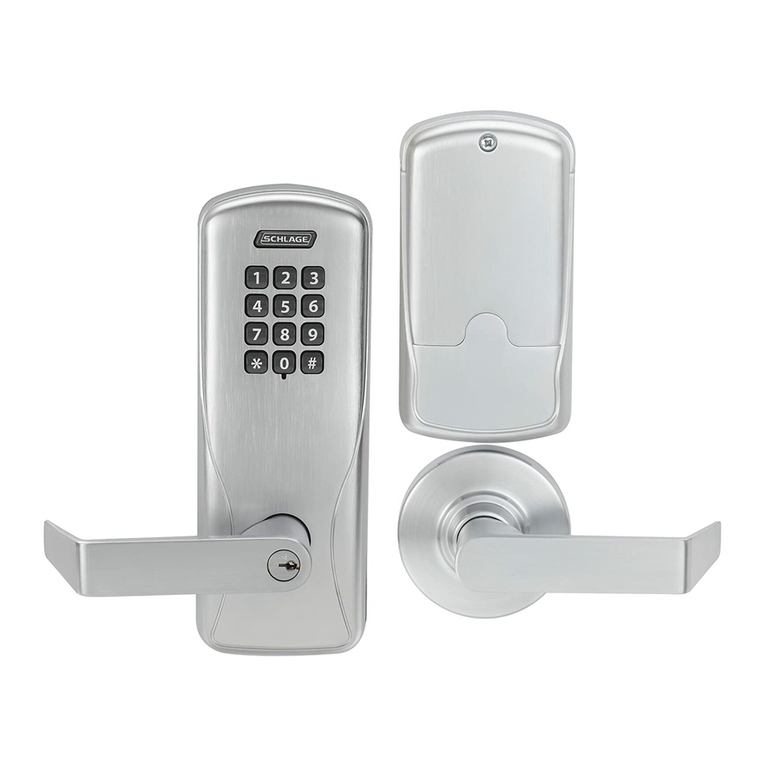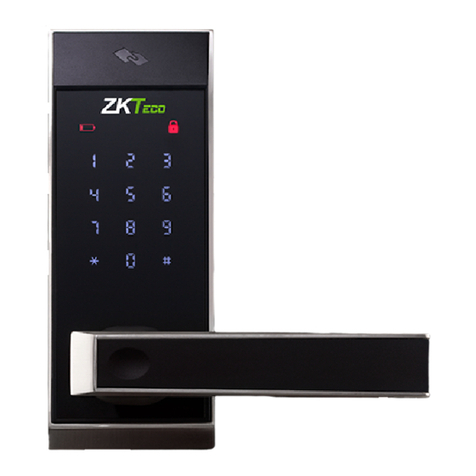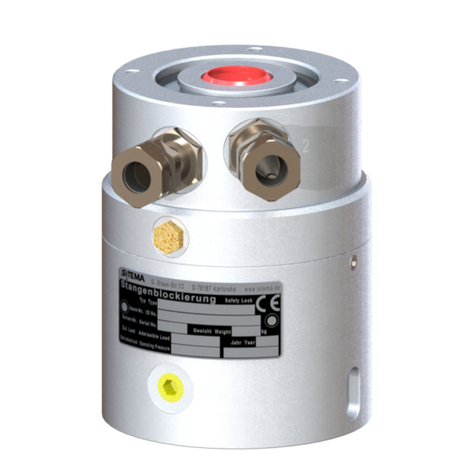
5. Fixing the Lock How to change your code number
6. Fitting the Strike Plate
7. The Snib Function
Cut the fixing bolts to suit the door thickness,
allowing at least one threaded section to screw
into the keypad.
Hold the keypad and the inside handle, with the
seals, onto the door with the spindle in position.
Using the fixing bolts, screw everything together
through the top and bottom holes of the inside
handle. Before final tightening, make sure the lock
is vertical, and test the mechanism to ensure that
it is all moving easily.
DO NOT CLOSE THE DOOR UNTIL YOU'RE SURE THAT
THE CODE WORKS.
DO NOT over tighten the fixing bolts. This may cause
distortion and poor operation.
Position the strike plate on the door so that it lines up
with the flat of the latcholt, NOT THE PLUNGER.
Mark the inner and outer edges of the strike plate and
cut a 1mm rebate so that it fits flush with the surface
of the door frame.
Drill or cut a recess for the latchbolt.
Fit the strike plate using only wood screw to ensure
it's positioned accurately. The latch bolt, and not the
plunger, should enter the aperature easily and be held
without too much 'play'. When satisfied, secure the
strike with the second screw.
The 'Hold-open' model is equipped with a snib on the
inside handle. This enables the latchbolt to be held
open when required.
If the snib function is not required, you can remove it by
unscrewing the 4 screws, one from each corner, (2 long & 2
short) from inside the backplate. This will enable the metal
plate, the snib, a small spring & a ball bearing to be removed.
Please note that the metal plate, only needs to be replaced
plus the enclosed plastic clip to cover the aperture.
it is all moving easily.
DO NOT CLOSE THE DOOR UNTIL YOU'RE
SURE THAT THE CODE WORKS.
DO NOT over tighten the fixing bolts. This may
cause distortion and poor operation.
Position the strike plate on the door so that it lines up with
the flat of the latchbolt, NOT THE PLUNGER.
Mark the inner and outer edges of the strike place and cut
a 1mm rebate so that it fits flush with the surface of the
door frame.
Drill or cut a recess for the latchbolt
Fit the strike plate using only wood screw to ensure it's
positioned accurately. The latch bolt, and not the plunger,
should enter the aperature easily and be held without too
much 'play'. When satisfied, secure the strike with the
second screw.
N.B The plunger beside the
latchbolt deadlocks the latchbolt
and protects against manipulation.
It must not enter the strike plate
aperture when the door is closed.
Remove the lock from the door.
Remove the 4 retaining screws from the back of
the keypad. Take extra care to keep the keypad on
a flat surface, when you are removing the plate
due to all of the small components inside.
You will now see that there are 5 red coloured
coded tumblers & 8 blue coloured, uncoded
tumblers plus 1 clear tumbler ('C' button).
To change your code, push the 'C' button down
and hold it. You can then easily remove one or
more of your coded & uncoded tumblers, using the
tweezers supplied.
Please note you should never remove the 'C' tumbler.
Please note the different shapes of tumblers,
before reinsterting them into the lock body. Firstly,
there is a difference in shape between the coded &
uncoded tumblers into the lock body, they must be
fitted facing the right way.
After you have refitted the tumblers and made a note
of the new code, please replace the metal plate with
the 4 screws.
Please note, with the spare tumblers provided, you
can either increase the number of digits in your
code to 6 or 8 or reduce to 4.
1)
2)
3)
4)
5)
6)
7)
8)

